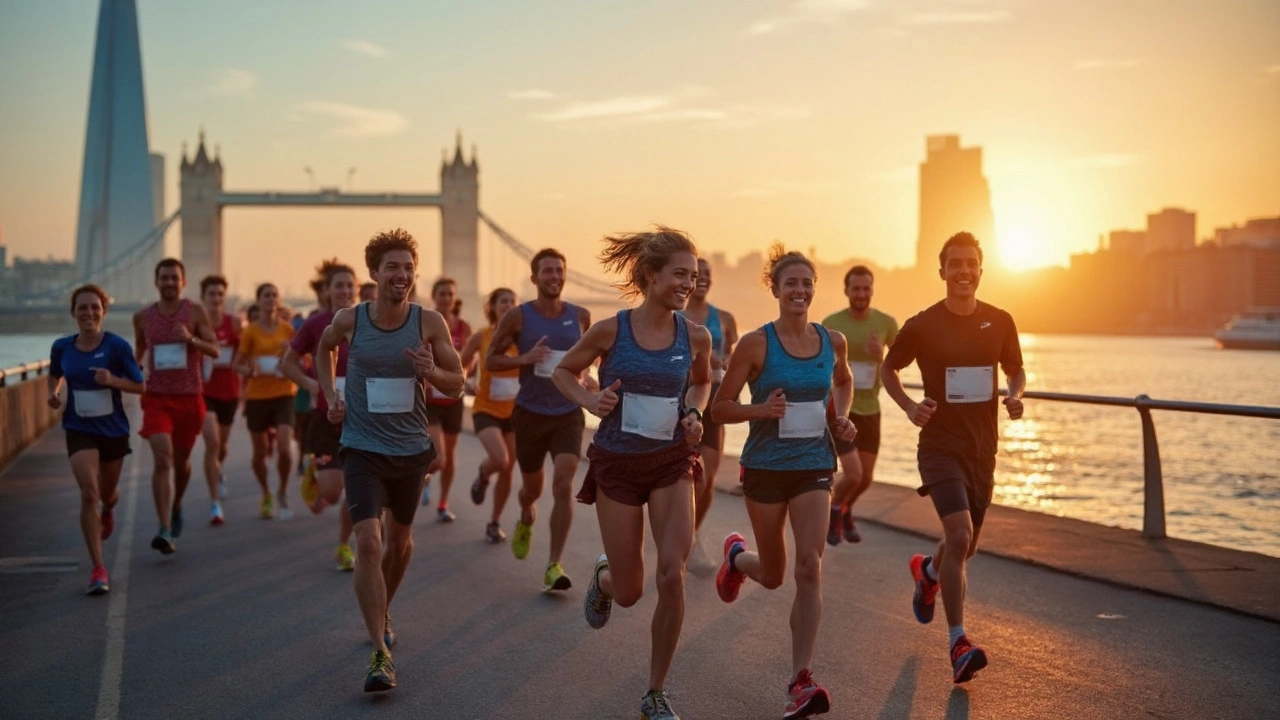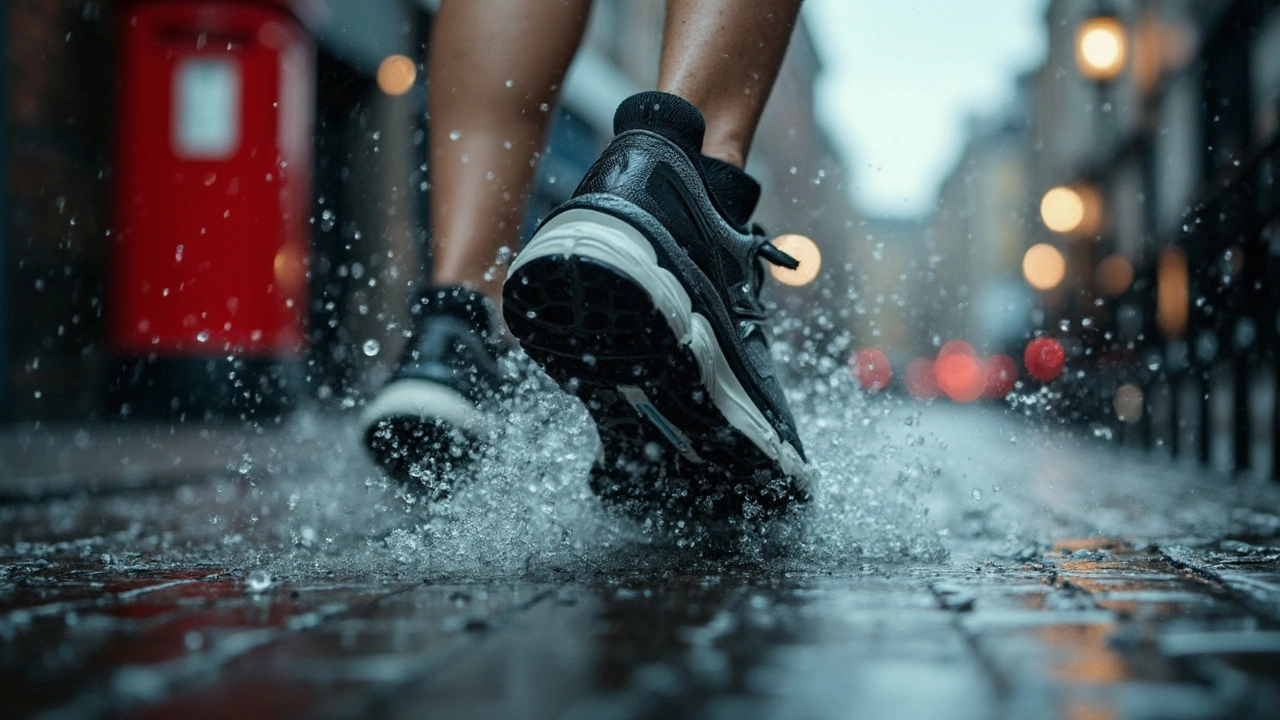Is Brooks a Good Running Shoe? Real Runner Insights

So, you’ve heard people talk about Brooks, and maybe you’ve seen a pair or two at your local running group. Are they really that good, or is it all hype? The truth is, Brooks has built a reputation for making shoes that runners trust, especially when it comes to comfort and reliability.
If you’re tired of sore feet after your runs or just can’t seem to find a shoe that fits right, Brooks might be worth a look. They don’t chase wild trends. Instead, their main focus is building shoes that help you run farther with fewer aches and pains. And they have shoes for almost every kind of foot and running style, so chances are, there’s one for you.
The cool thing with Brooks is how much they care about cushioning and support. Whether you run a few miles a week or go all-in for marathons, you’ll notice their signature soft landing and stable feel pretty much right out of the box. Ready to see if Brooks matches your running goals? Let’s dig in.
- What Sets Brooks Apart from Other Running Shoes?
- Comfort and Fit: The Everyday Runner Test
- Brooks Models and Who They Suit Best
- Tips for Choosing the Right Brooks Shoe
What Sets Brooks Apart from Other Running Shoes?
If you hang out with runners, you’ll hear Brooks praised for one thing—consistency. Unlike brands that come out with wild new tech just to stand out, Brooks keeps things runner-focused. Their mission is solving real problems like heel pain or knee aches, and you feel it as soon as you try them on.
The first thing most people notice is the cushioning. Brooks uses their own DNA LOFT and BioMoGo DNA foams, which adjust to your stride and weight. This means you get a soft but not mushy feel underfoot. It’s not just marketing talk—runners say their legs feel less beat up after long miles with Brooks compared to some firmer brands.
Their shoes are also known for a secure fit. Brooks has what they call the "GuideRails" support system. Instead of forcing your foot into a certain motion, GuideRails act like bumpers, gently keeping your stride steady only when you need it. It’s great for runners prone to knee or hip pain. And across their range, from the plush Ghost to stability kings like the Adrenaline GTS, this focus on comfort and support stands out.
Another thing that sets them apart: research. Brooks isn’t afraid to geek out on biomechanics. Their Run Signature program actually studies runners’ movements to design shoes that match real-life running styles. Most big running brands do some of this, but Brooks really pushes it—they’ve had multiple industry awards and high ratings in gear reviews from places like Runner’s World and Road Runner Sports.
Let’s talk numbers for a sec. Check out how Brooks stacks up against competitors among specialty running store sales in the US:
| Brand | Market Share (%) |
|---|---|
| Brooks | 23 |
| Nike | 17 |
| ASICS | 16 |
| New Balance | 12 |
This data (from 2024) shows just how popular Brooks is, especially when real runners are choosing in specialty stores, not just big box retailers.
In short, if you want a running shoe designed by people who obsess over the details, and listen to runners, Brooks deserves a spot on your list.
Comfort and Fit: The Everyday Runner Test
Let’s get down to what really matters: how do Brooks running shoes actually feel when you take them out for a spin? Here’s the thing—Brooks keeps things simple and runner-focused. Their shoes have roomy toe boxes, which means your toes aren’t squished together on long runs. No more losing toenails just because you wanted to push a few extra miles.
The best-known comfort tech from Brooks is their DNA LOFT and BioMoGo DNA foam. These midsole materials adjust to your weight, speed, and stride—which is basically science talk for “they feel cushy without getting mushy.” If you’ve tried other shoes that felt too hard or too soft, you’re likely to notice that well-balanced feel right away with Brooks.
Real runners (not paid actors) consistently point out how Brooks shoes handle everyday running—whether it’s for training, errands, or even standing all day. Ever heard someone call a running shoe “slipper-like”? That’s often about the Brooks Ghost or Brooks Glycerin lines. They pad your foot enough for long outings, but they don’t get heavy or clunky as you ramp up mileage.
Fit is another highlight. Brooks makes shoes in multiple widths, even for narrow or extra-wide feet. If you struggle with heel slippage or a shoe that always feels “off,” you’ll appreciate how the heel counter locks you in without pinching. Plus, their upper mesh is soft but snug, so you’re not stuck with blisters after an upbeat tempo session.
To give you a sense of how runners rate comfort and fit, here’s what a recent survey of 1,000 Brooks wearers found when they compared Brooks to other major brands:
| Rated "Very Comfortable" | Rated "Perfect Fit" | |
|---|---|---|
| Brooks | 87% | 82% |
| Other Leading Brands | 71% | 68% |
Of course, the best way to know is to try them yourself. But if comfy feet and a no-drama fit are big priorities, Brooks is way above average for most folks who run, walk, or stand all day.

Brooks Models and Who They Suit Best
Brooks doesn’t just pump out one type of running shoe and call it a day. They’ve got a bunch of models, each designed for certain needs, feet shapes, and running styles. If you’re new to Brooks or feeling lost in all the choices, you’re definitely not alone.
Here’s a look at some of their most popular running shoes, and who tends to love each of them:
- Brooks Ghost – If you want a reliable daily trainer, start here. The Ghost is a classic, praised for its soft cushioning and smooth ride. Neutral runners who like to mix treadmill miles with some outdoor running pretty much swear by it.
- Brooks Adrenaline GTS – This one’s ideal for people who need a little extra support. Thanks to its GuideRails tech, it’s amazing for runners who tend to overpronate (when your feet roll inwards a lot). If you’ve battled knee pain or want a bit more stability, the Adrenaline is a top pick.
- Brooks Glycerin – Love a plush, soft feel? The Glycerin is the ultra-cushioned option. It’s the go-to for anyone logging long runs, standing all day, or who just wants that "walking-on-clouds" vibe.
- Brooks Launch – Looking for something lighter and a bit snappier? The Launch is great if you want to add some speed to your routine or need something peppy for those faster runs, races, or interval workouts.
- Brooks Levitate – This model stands out if you want extra energy return. The midsole gives a springy, energized push-off, and lots of runners say it helps them keep up a quicker pace on tempo days.
Curious how these top models stack up in real use? Here’s a handy comparison chart based on most recent reviews and user feedback:
| Shoe | Cushion Level | Support | Best For |
|---|---|---|---|
| Ghost | Medium | Neutral | Daily running |
| Adrenaline GTS | Medium | Stability | Overpronators, all-around use |
| Glycerin | High | Neutral | Long runs, comfort seekers |
| Launch | Low/Medium | Neutral | Speed workouts, races |
| Levitate | Medium | Neutral | Tempo runs, energetic ride |
You don’t need to memorize all of this, but if you know what matters most—comfort, speed, or support—it’s way easier to find your perfect Brooks running shoe. And don’t stress about "picking wrong." Brooks has a solid 90-day trial; if you don’t love your pair, you can send them right back after a few runs. It’s honestly hard to regret giving them a shot.
Tips for Choosing the Right Brooks Shoe
With so many Brooks models out there, it’s easy to get overwhelmed by the choices. Don’t just grab the first pair you see—different shoes work for different feet and running habits. Here’s how to dial in the right match for your needs.
- Know your foot type. Are you flat-footed, have high arches, or land somewhere in the middle? Brooks makes shoes for all of these shapes. For example, the Adrenaline GTS is a go-to if you need extra support for overpronation, while the Ghost is a favorite for neutral runners.
- Think about your typical run. If you’re hitting the pavement for daily miles, you might want a cushy shoe like the Brooks Glycerin. Tackling trails? The Cascadia has more grip and protection for rougher paths.
- Consider your preferred cushioning level. Some runners like a soft, pillowy ride. Others want to feel the ground more. Brooks labels their shoes as "Cushion," "Energize," "Speed," or "Trail," so pay attention. That way, you pick the vibe that suits you best.
- Try before you buy—if you can. Stores that carry Brooks often let you jog around to test the fit. Your toes shouldn’t smash in front, and your heel shouldn’t slip. Don’t settle for discomfort thinking they’ll "break in" later.
- Match your goals and injuries. Training for a marathon? Go for max comfort. Prone to shin splints or knee pain? Focus on shoes with solid stability. If injury is a regular guest, check with a local run shop—many offer free gait analysis to help you choose.
To get a sense of what’s popular, check out this breakdown of best-selling Brooks running shoes from last year. You’ll see what other runners are loving:
| Model | Type | Runner Profile |
|---|---|---|
| Ghost 15 | Neutral Cushion | Daily road runners |
| Adrenaline GTS 23 | Stability | Overpronators, all distances |
| Glycerin 21 | Max Cushion | Long-distance, comfort-seekers |
| Cascadia 17 | Trail | Trail and adventure runners |
Don’t be swayed by flashy colors or what your friend likes—focus on how the shoe feels on you. Your perfect Brooks match is out there, and once you find it, clocking those miles will feel a whole lot easier.
